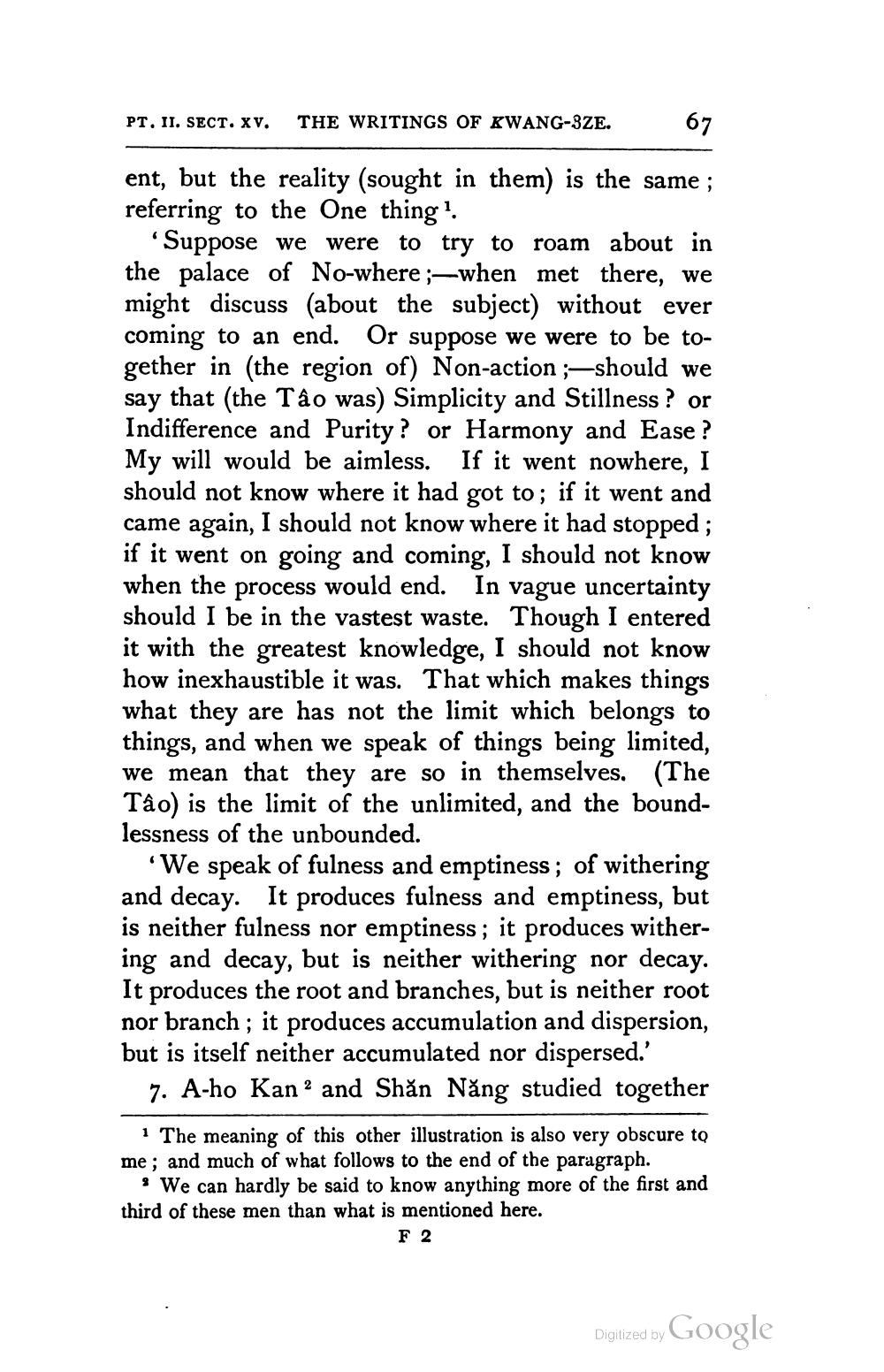________________
PT. II. Sect. xv.
THE WRITINGS OF KWANG-BZE.
67
ent, but the reality (sought in them) is the same ; referring to the One thing?
Suppose we were to try to roam about in the palace of No-where ;—when met there, we might discuss about the subject) without ever coming to an end. Or suppose we were to be together in the region of) Non-action ;-should we say that (the Tâo was) Simplicity and Stillness ? or Indifference and Purity? or Harmony and Ease ? My will would be aimless. If it went nowhere, I should not know where it had got to; if it went and came again, I should not know where it had stopped ; if it went on going and coming, I should not know when the process would end. In vague uncertainty should I be in the vastest waste. Though I entered it with the greatest knowledge, I should not know how inexhaustible it was. That which makes things what they are has not the limit which belongs to things, and when we speak of things being limited, we mean that they are so in themselves. (The Tâo) is the limit of the unlimited, and the boundlessness of the unbounded.
We speak of fulness and emptiness; of withering and decay. It produces fulness and emptiness, but is neither fulness nor emptiness; it produces withering and decay, but is neither withering nor decay. It produces the root and branches, but is neither root nor branch ; it produces accumulation and dispersion, but is itself neither accumulated nor dispersed.'
7. A-ho Kan2 and Shăn Năng studied together
1 The meaning of this other illustration is also very obscure to me; and much of what follows to the end of the paragraph.
. We can hardly be said to know anything more of the first and third of these men than what is mentioned here.
F 2
Digitized by Google




